Harmony Amidst Horizons: A Peaceful Odyssey Through Oman
A youth reflection piece by Rishini Dilshani
Embarking on a journey towards inner peace is akin to setting sail on a serene river, where each ripple carries the promise of self-discovery and the gentle current guides the way to a harmonious existence.
As the sun gracefully ascends, a welcoming day unfolds in Oman, adorned with the spendour of Arabian hospitality. From the majestic mountains to the sun-kissed shores, every corner of this enchanting land beckons with a warmth that transcends borders. As the first rays illuminate the landscape, Omani hospitality emerges like a cherished tradition, embracing visitors with open arms. The scent of frankincense dances in the air, a fragrant overture to the genuine kindness that awaits. The embrace of an Omani day is not just a sequence of hours; it’s a symphony of generosity, respect, and a shared appreciation for the beauty of connection. Whether under the shade of date palms or within the walls of ancient forts, each day in Oman writes a new chapter in the book of hospitality, a testament to the enduring charm that makes every visitor feel not just welcome but truly at home.
Our peace journey began in Muscat, where tradition meets modernity. We had an orientation about our five-day programme, and we did a small introduction activity to introduce ourselves.
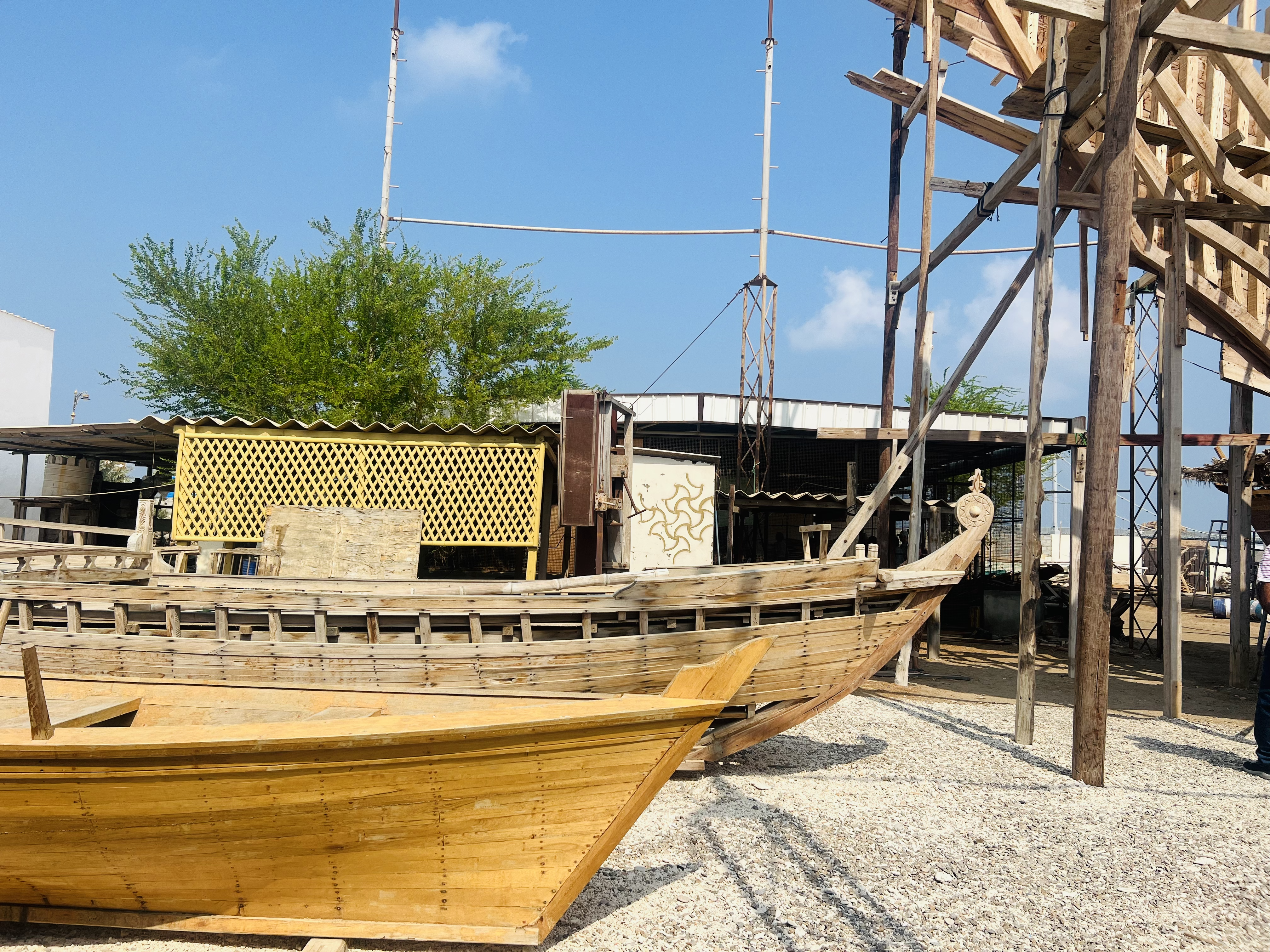
Dhow boats.
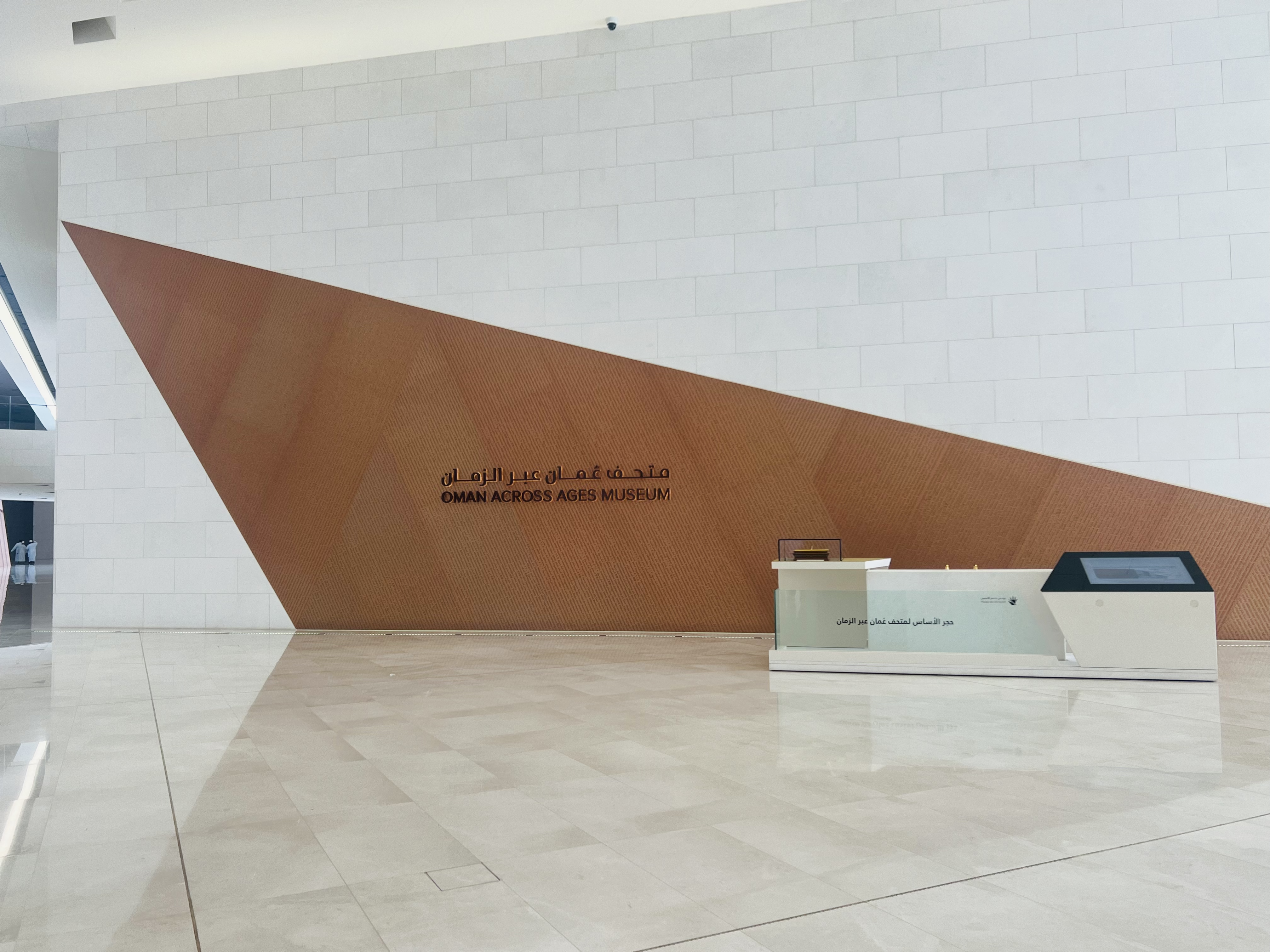
Oman Across Borders Museum.
The first day we went to the city of Sur on the Gulf of Oman, which is one of the most historic boat-building centres in Arabia. And today, artisans still hand-craft dhows of all sizes at the factory in Sur, using centuries-old techniques. By the sixth century, the city of Sur had become an important centre for trade with East Africa. Once built, these wooden ships would sail across the region—to the Persian Gulf, the Arabian Sea, the coast of East Africa, and across to India and China—for trading. From this traditional ship factory, we realised how history brings evidence to the future, and there is no great future without proud history.
After that, we had our lunch the traditional Omani way. We sat on mats around the big plates, and we ate by hand. The Arabic eating system in Oman reflects cultural values and traditions. Meals often emphasise communal dining, with an emphasis on hospitality. Traditional Omani cuisine includes dishes like rice, meat, and fish, flavoured with a blend of spices. We often had dates and coffee as a gesture of welcome. Observing these customs can provide insights into Omani culture, emphasising the significance of sharing meals and the role of food in social connections.
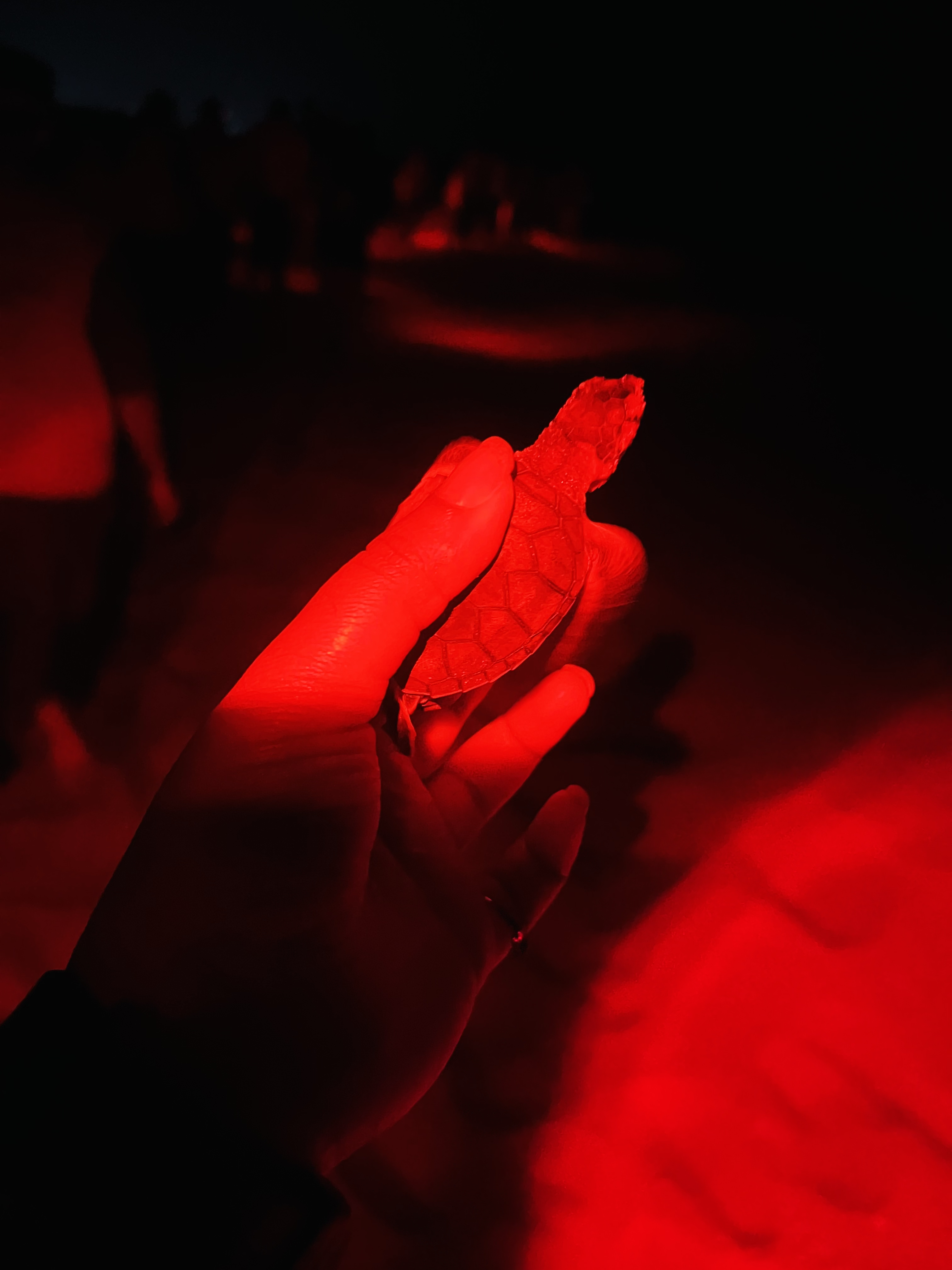
Baby sea turtles hatched.
We then travelled to Ras al-Hadd. There was a museum where you could learn about sea turtles. The turtle sanctuary at Ra Al Jinz Turtle Reserve combines an interactive museum with research laboratoris and a wide range of amenities for all to learn about the wonders of the environment. It is part of a natural reserve that is a safe habitate for hawks and green turtles, which is why the beach is divided into two areas: an open area available all day and a closed area, whose access is regulated by the government. When staying in the reserve area, we could watch how young turtles hatch from their eggs and return to the sea during the night and sunrise. The beach is about 60 kilometres from Sur City, the capital of the A’Sharqiyah South Governorate. This beach has been proclaimed a turtle reserve. Turtles come here, especially to Ras Al Jinz beach in Wilayt Ras AlHadd, to lay an estimated number of 6,000 to 13,000 eggs. The beach is distinguished by its spectacular bays and rock formations, which are havens for large numbers of birds. We could also walk along the coast and collect shells. In the evening, helped to release baby turtles into the sea. Releasing baby turtles into the sea allows us to contribute to conservation efforts. It helps to enhance population numbers, study migration patterns, and assess the impact of human activities on marine life. Additionally, monitoring their survival can provide valuable data for the protection of endangered species and marine ecosystems.
I thought baby turtles needed our help to go to the sea; like in this world, some people need our help to live, and sometimes we also need others’ help. Baby turtles offer valuable lessons in resilience, determination, and adaptation. As they embark on their own journey from nest to sea, facing various obstacles and predators, they showcase tenacity and survival instincts. Their resilience on instinctual behaviours underscores the significance of innate knowledge in navigating challenges. Cooperation among hatchlings during their trek highlights the strength of community and collaboration. Moreover, the vulnerability of baby turtles emphasizes the importance of protecting and preserving environments crucial for their survival. Observing these creatures teaches us about the delicate balance of ecosystems and the need for collective efforts to safeguard the natural world for future generations.
The second day morning began with the inspirations of the first day. Experiencing a serene sunrise at Ras Al Hadd Beach evoked a profound sense of peace and tranquility. After that, we experienced dune bashing in Omanin Bidiyah, on the edge of the Sharqiyah Sands, which is located some 233km from Muscat. Wilayat Bidiyah is a beautiful oasis located at the entrance of Sharqiyah Sands. It is considered a starting point to explore the depths of the sand and enter a world full of excitement and vitality, away from the bustle of the city and a change from daily routines. Bidiyah is a collection of villages at the edge of the Sharqiyah Sands. Home to Bedouin people from the desert, it is the perfect place to experience traditional camel or horse races.
We participated in some outdoor games which taught us valuable lessons, including teamwork, communication, problem-solving, leadership, and the importance of collaboration. We then climbed a small mountain in the desert to see the sunset. Witnessing a sunset in the desert evokes a unique blend of awe and tranquilly as vibrant hues paint the vast landscape, creating a moment of stillness and wonder. That evening, we had a star observation session. Observing night stars in the desert could teach lessons about the vastness of the universe, the beauty of natural phenomena, and the significance of perspective. It may also encourage introspection and a sense of humility in the face of the cosmos. We learned how to find directions through the stars. It was a great activity to feel calm at the end of a tiring day.
The next day, we went to the mountain Jebel Akhdar. The Jebel Akhdar, or Al Jabal Al Akhdar (‘The Green Mountain’), is one of the Hajar Mountains of Oman. It rises to a height of 2,980m and encompasses the Saiq Plateau at 2,000 m above sea level. Jebel Akhdar is famous for its labyrinth of wadis and terraced orchards, where pomegranates, apricots, and roses grow in abundance due to its mild Mediterranean climate. At Jebel Akhdar, we hiked through huge stones, saw beautiful landscapes and natural wonders – all of which made the journey worthwhile. Hiking in Jebel Akhdar Mountain on a cold night climate with friends is a unique adventure. The crisp air and starry sky create a serene atmosphere as you ascend. The group and shared excitement add to the experience, making it memorable.
Another day morning, we left from Jabal al Akhdar and reached our next destination, the Oman Across Ages Museum. It is a new national museum that celebrates the creation of a nation, praises human endeavour, and inspires young Omanis to connect to their rich history. It was a journey through Oman’s past to the present and an insight into its future. We learned about different ages, dynasties, and civilizations.
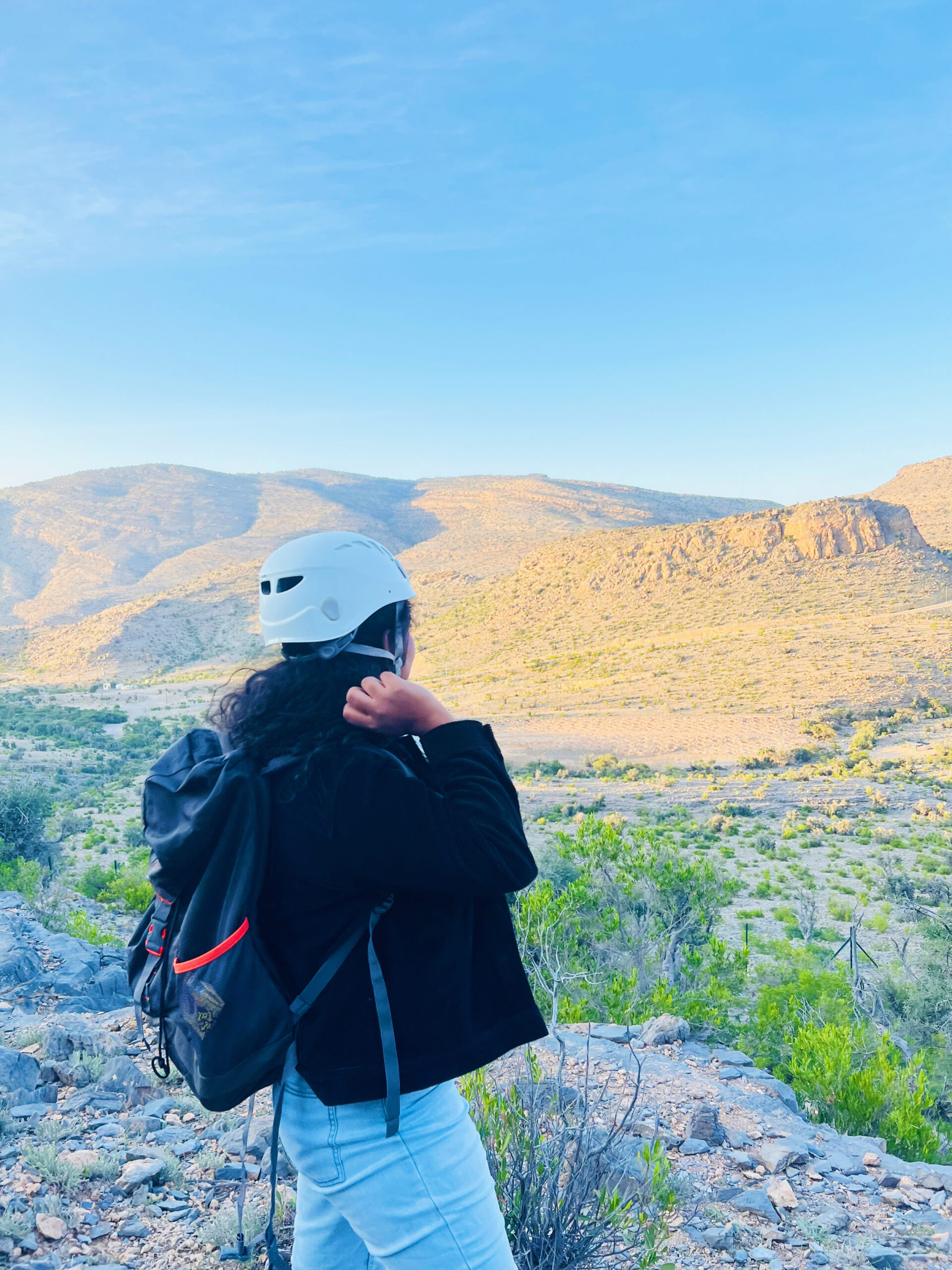
Rishini hiking at mountain Jebel Akhdar.
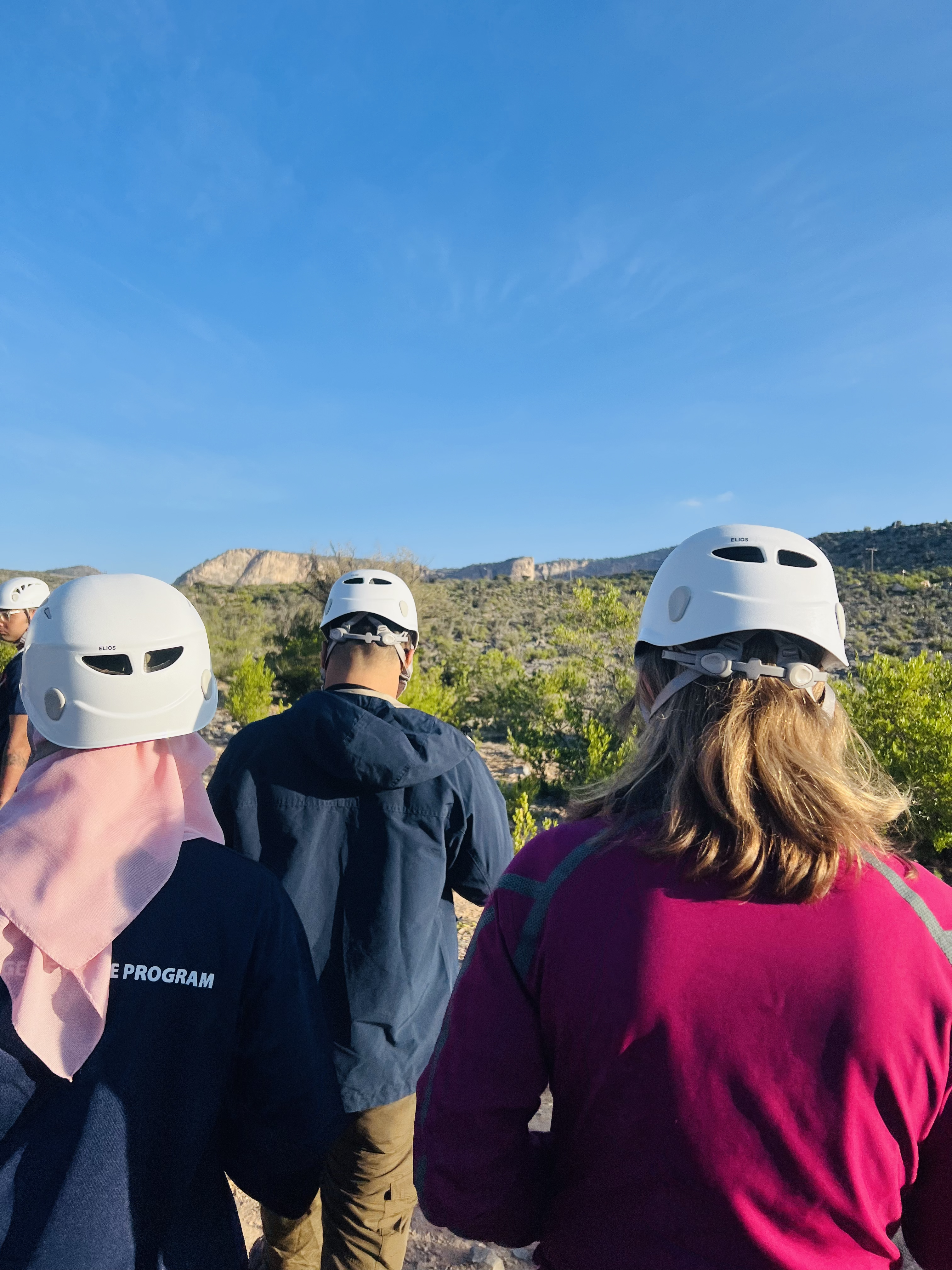
Youth cohort hiking at mountain Jebel Akhdar.
Finally, we came to the end of our journey. Our last stop was to a youth centre in Oman. The Centre, located in Muscat Grand Mall, offers a variety of training programmes for young people in Oman. Additionally, the Centre in Muscat offers a space and various facilities for young people to use free of charge. This included a photography studio, an audio recording studio, an art space, a table tennis hall, a 3D printing lab, a drone lab, and a music hall with musical instruments. In addition to a reference library with over 600 titles, including braille and audiobooks for those who are visually or hearing impaired.
As part of the program, we also attended the Global Consultation on the Role of Traditional Leaders and Actors, led by the UN Office on Genocide Prevention and the Responsibility to Protect and the Network for Religious and Traditional Peacemakers. There were 60 traditional leaders from over twenty countries, who were finalizing a plan of action for the role of traditional actors in preventing atrocity crimes.
Finally, we also were able to take part in the Youth, Religion and Mediation course. We learned about:
- world views
- dimensions of religion
- guidelines and principles of mediation
- comparison of mediation models (insider and outsider)
- mediation context mapping tools
- pre-mediation steps; and
- advantages and disadvantages of different levels of religious authorities.
The conclusion of the 10-day programme marked a significant milestone in our’ journey, characterised by notable gains in knowledge and skill acquisition. Over the course of the programme, we engaged in a variety of activities, including lectures, workshops, and practical exercises. These sessions were meticulously structured to cover key concepts, encourage critical thinking, and facilitate the hands-on application of acquired knowledge. The diverse range of learning methodologies employed ensured a well-rounded educational experience.
About Rishini Dilshani Muzammil

Rishini Dilshani is a remarkable individual who has dedicated her life to promoting peace and harmony in Sri Lanka. She is a social worker and a BA of Social work student at National Institute of Social Development. Rishini has been working for several years with Inter Religious Committee, educating and training the community through peace, mediation, and conflict resolution. She is a peace ambassador for the IDOVE (Interfaith Dialogue on Violence Extremism) project, which was sponsored by the National Peace Council Sri Lanka and involved youth leaders from all over Sri Lanka. Rishini worked with FREEDOM project, the Female Religious Leaders for Dialogue and Mediation (FREEDOM) project, supported by the Network for Religious and Traditional Peacemaker’s Asia Working Group small grant program. Her ultimate goal was to increase peace and harmony throughout Sri Lanka and to build peace by resolving the conflicts in the conflict areas. As a social work student, Rishini hopes to do her part in promoting peace and reconciliation. She firmly believes that there is no hope for tomorrow without peace and harmony.
Follow the Network on social
